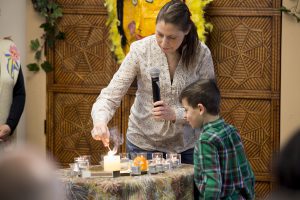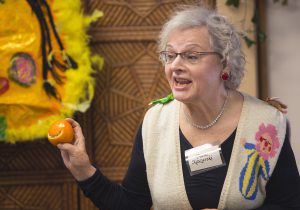By Lucy Lettis

Censorship of books has long been a personal hobbyhorse of mine. We’ve never been without it, but in recent months more efforts to censor literature have occurred than at any time in my own memory. Why is this? What in our cultural and societal climate is behind the acceleration of this scourge?
In earlier decades, the would-be censor would hotly argue, “I’m no censor, but….” Now, however, there seems to be no pretense associated with literary censorship. In some communities it is a badge of honor to ban books to “protect” our children.
And it isn’t just elementary, middle school, and high school libraries where this is happening. (Another topic for another day is university and college students who self-censor, retreating to “safe spaces” to protect their fragile sensibilities from being offended by some of the greatest works of literature.)
Not just students and children can be victims of censorship. So can adults. In December 2021 the public library of Llano County, Texas, closed for three days in order for librarians to scrutinize more than 850 books about race, equality, or sexuality in response to flurries of book challenges from local residents. In the following weeks, investigations of literature spread across the state. And questions about both school and public library collections are more than coincidental, says the Texas Library Association.
Candidate launched book-banning initiative
In Congress, Rep. Matt Krause, chair of the House Committee on General Investigations and a candidate for Texas attorney general, launched a major book-banning initiative in October 2021. Book challenges proliferated. In November a group of #FReadom Fighters in which authors, librarians, families, teens, and parents highlight and support the positive work of librarians in speaking up about book challenges, was formed. The #FReadom hashtag quickly rose to number six on Twitter’s list of most popular hashtags. So . . . there is hope. In Texas, the state library association set up a “peer counseling” helpline for librarians to get support from others more familiar with the issue. But in December 2021, Rep. Krause asked multiple school superintendents across the state to confirm by letter whether any books on the aforementioned list of 850 titles were in school libraries or classrooms.
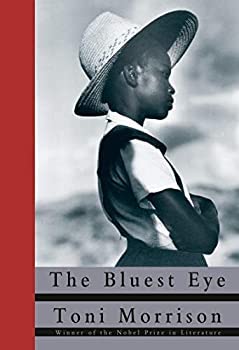
Book-banning efforts are by no means limited to Texas. In the first week of February 2022, the New York Times reported that Tennessee school boards were busy striking down long-beloved, award-winning classic literature from their social studies and language arts programs. The Williamson County, Tennessee, school board successfully removed “Walk Two Moons,” a Newberry Medal-winning book that follows the story of a young girl who is exposed to the fact that giving birth can sometimes occasion cursing, miscarriage, hysterectomy, stillbirth, and screaming during labor. As Margaret Renkl, a Times contributing opinion columnist, writes, “May God save all American children from the knowledge that women in labor are apt to scream.”
‘A harbinger of things to come’
Another Tennessee school board, that of McMinn County, unanimously voted to ban “Maus,” a Pulitzer Prize-winning graphic novel about the Holocaust, from its eighth-grade social studies curriculum because, the board said, the book unnecessarily uses profanity and nudity, and depicts violence and suicide. The author, Art Spiegelman, whose Maus relays the story of his family’s experience during the Holocaust, told the Washington Post exactly what he thought of the antisemitic decision: “It’s part of a continuum, and just a harbinger of things to come. This is a red alert.”
According to Christian website faithful.org, one in four American Jews was targeted in some fashion during 2021. When students learn about injustices like antisemitism, objections about language and sex are always an authoritarian excuse to sanitize history, further marginalizing already oppressed populations.
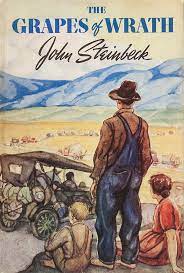
In 2021 and into 2022 there have been nationwide campaigns to remove from school libraries books by and about LGBTQ+ people and people of color. At least nine states in mostly Republican areas passed “anti-critical race theory” bills, following the lead of Gov. Greg Abbot of Texas, a Republican, who signed a bill regulating how US history and various ideas about race can be taught in schools. One of many examples of LGBTQ+ paranoia is a bill introduced in the state of Oklahoma that would prohibit school libraries from keeping books on hand that focus on sexual activity, sexual identity, or gender identity.
What about children who will find solace?
Is it true that a young impressionable child might momentarily flirt with the idea that s/he inhabits the “wrong” body or is attracted to members of the same sex? Maybe. But is a child’s sexual or gender identify actually going to change because of reading a book? And what about children who will find solace in reading about others who have feelings like theirs? They will realize that they are not “freaks,” that they needn’t be ashamed of non-traditional roles.
It isn’t just the frequency of book-banning efforts that has changed; it is also the tactics and the venues where they play out. Conservative groups, in particular, fueled by social media, are now pushing the challenges into statehouses, law enforcement, and political races. Organizations such as Moms for Liberty and No Left Turn in Education maintain lists of books it says are “used to spread radical and racist ideologies to students.” Two of the most widely challenged books are Toni Morrison’s “The Bluest Eye” and Margaret Atwood’s “The Handmaid’s Tale,” two examples of important literature for their content and style.
The author Laurie Halse Anderson, whose young-adult books have frequently been challenged, says that pulling titles that deal with difficult subjects can make it harder for students to discuss issues like racism and sexual assault. Removing the possibility for conversation, Anderson maintains, lays the groundwork for increasing bullying, disrespect, violence, and attacks.
‘To Kill a Mockingbird’ removed
A title that has appeared on banned books lists for decades is “To Kill a Mockingbird.” Not long ago, the novel was voted the best book of the past 125 years in a survey of readers conducted by The New York Times Book Review. But just a couple of weeks ago a school district in Washington state voted to remove it from the ninth-grade curriculum. Objections included that the novel marginalized characters of color, celebrated “white saviorhood,” and used racial slurs dozens of times without addressing their derogatory nature. It is the role of librarians and educators to add context and encourage lively discussion. They are, after all, trained at graduate levels to acquire such skills. Pressure from politicians and parents may be discouraging libraries from the acquisition of difficult texts. To me, that seems sacrilege to the graduate degree in Library Science, which entails evaluating literature using a variety of criteria, including quality of content, style, reflection of diversity, etc.
In January 2021 the mayor of a town in Mississippi withheld funding from the public library because he opposed what he called “homosexual materials” that went against his Christian beliefs. The mayor’s obligation ought to be to his constituents, not his personal deity, but, more importantly, it’s not hard to see the slippery slope of that argument. Blocking non-Christian texts from libraries could theoretically ban literary criticism of religious texts, books about atheism, or anything else that doesn’t sufficiently praise Jesus.
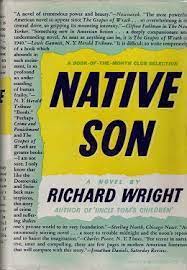
Stepping away from the theoretical, however, the mayor’s ban doesn’t make any sense. “Homosexual materials” could be practically anything. Books that feature gay characters? Books by LGBTQ+ authors? Whatever the complaint, the Bible is chock full of far more so-called “offensive” content. There is no objective standard here.
‘Censorship is to art as lynching is to justice’
American literary critic and historian Henry Louis Gates, Jr. says “Censorship is to art as lynching is to justice.” Considering freedom of expression, Salman Rushdie says, “Without the freedom to offend, it ceases to exist.” Russian and American poet and essayist Joseph Brodsky famously wrote, “There are worse crimes than banning books. One of them is not reading them.”
My personal favorite book-banning example is “Huckleberry Finn. “How many people who have objected to Twain’s use of the word, “nigger,” realize that Mark Twain was an abolitionist and advocate for racial equality?
The protagonist of “The Catcher in The Rye,” Holden Caulfield, rubs out a swear word from the wall of an elementary school. He’s trying to protect his sister Phoebe and other children from reading a word that could poison their minds. Of course, “The Catcher in the Rye” is one of the most banned books of all time. Other examples include “Of Mice and Men,” “The Grapes of Wrath,” “Native Son,” “1984,” “The Color Purple”; the list goes on and on.
Well, I’ve indulged my hobbyhorse. But I am almost equally passionate about censorship on university and college campuses. On some campuses students in literature classes demand “safe spaces.” They must protect their ever-so-fragile sensibilities, thereby censoring themselves out of many of our greatest writers and thinkers. Then there’s censorship of invited commencement speakers. Then there’s hate speech! Nadine Stossen, former president of the ACLU, maintains that we should resist hate speech with free speech. These are all topics for another day.
Society member Lucy Lettis has a bachelor of arts degree in English Literature from C.W. Post College and a master of science degree in Library & Information Science from the Palmer Graduate School of Library & Information Science of Long Island University.

